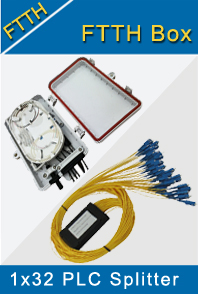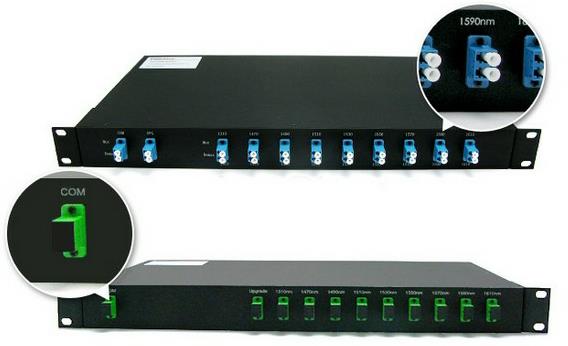-

- Sopto Home
-

- Special Topic
-

- FTTH Knowledge
-

- Why is WDM Technology So Popular Today?
FTTH Knowledge
- Solving the FTTH Rollout Problem in Multiple Dwelling Units
- WDM PON Introduction FAQ
- A Simple Overview of Optical Power Meter
- ODN is based on PON FTTH Optical Cable Network of the Device
- Using an OTDR to be an Expert in Fiber Link Testing
- How FTTH Broadband Works?
- Connections among Fiber Terminal Boxes & Patch Cables & Pigtails
- Easy to Install a Fiber Terminal Box
- What is Arrayed Waveguide Grating?
SOPTO Special Topic
Certificate



Guarantee
Except products belongs to Bargain Shop section, all products are warranted by SOPTO only to purchasers for resale or for use in business or original equipment manufacturer, against defects in workmanship or materials under normal use (consumables, normal tear and wear excluded) for one year after date of purchase from SOPTO, unless otherwise stated...
Return Policies
Defective products will be accepted for exchange, at our discretion, within 14 days from receipt. Buyer might be requested to return the defective products to SOPTO for verification or authorized service location, as SOPTO designated, shipping costs prepaid. .....
Applications

Sopto supply the best FTTH solutions for your network!
SOPTO Products
- Fiber Optic Transceiver Module
- High Speed Cable
- Fiber Optical Cable
- Fiber Optical Patch Cords
- Splitter CWDM DWDM
- PON Solution
- FTTH Box ODF Closure
- PCI-E Network Card
- Network Cables
- Fiber Optical Adapter
- Fiber Optical Attenuator
- Fiber Media Converter
- PDH Multiplexers
- Protocol Converter
- Digital Video Multiplexer
- Fiber Optical Tools
- Compatible
Related Products
Performance Feature
FTTH Knowledge
Recommended

Why is WDM Technology So Popular Today?
Nowadays the voice, video, and data networks are becoming more complex and requiring more bandwidth and faster transmission rates over ever increasing distances. To fulfill these demands, network managers are relying more about fiber optics. Nevertheless the reality that many providers, enterprise corporations, and government entities are facing is the fact that once their available fiber infrastructure is exhausted, laying more fiber is not really an inexpensive or feasible option. So, so what now?
Many groups are embracing Wave Division Multiplexing (WDM) technologies in order to increase capacity about the existing fiber infrastructure. WDM is a technology which multiplexes multiple optical signals onto a single fiber by utilizing different wavelengths, or colors, related to. By utilizing WDM communication methods network managers can realize a multiplication effect inside their available fiber's capacity.
WDM is protocol and bit-rate independent. WDM-based networks can transmit data in IP, ATM, SONET/SDH, and Ethernet, and look after bit rates between 100Mbps and 40Gbps. Therefore, WDM-based networks can hold various kinds of traffic at different speeds over an optical channel. It makes a less expensive approach to quick reaction to customers' bandwidth demands and protocol changes. To control bandwidth and expand capacity of existing fiber optic backbones, WDW-based networks by simultaneously combining and transmitting multiple signals at different wavelengths within the same fiber.

As segmentation and delivering business services tend to be more rampant, WDM optical solutions are becoming a valuable tool for cable operators. Using simple two-wavelength WDM can increase service capacity by twice within the same volume of fibers. For a long time, there've also been some limited solutions using more complicated WDM techniques that may carry four or even more optical signals on the same fiber. Recently cable equipment manufacturers have released innovations using WDM that transport multiple broadcast optical signals on the single fiber, making node segmentation more cost-effective and operationally friendly.
WDM greatly enhances the capacity of systems. You will find mainly two variations of WDM which can be popular: Coarse WDM (CWDM) and Dense WDM (DWDM). Each signal is at a different wavelength and each variation has different capabilities, costs, and operational friendliness, used in different WDM Multiplexer (or Demultiplexer) devices. Multiplexer combines several data signals into one signal for transporting on the single fiber while Demulitplexers separate the signals conversely.
CWDM technologies have only been created for HFC networks within the return-path up to recently. Regarding return-path, approximately eight transmitters at different CWDM wavelengths can be multiplexed onto an individual fiber simply by using a CWDM MUX (CWDM Multiplexer). This could be useful when the return-path has a lot more bandwidth contention compared to the forward-path, so 2X4 node segmentation may be sufficient.
DWDM technology offers much flexibility for node segmentation, yet it’s more expensive and operationally challenging than CWDM. The method to segment nodes utilizing DWDM within the forward-path is known as Broadcast/Narrowcast DWDM Overlay. It utilizes two fibers within the downstream: one fiber having an optical signal with all the broadcast content, and something fiber with multiple optical signals on DWDM wavelengths, each containing unique narrowcast happy to obtain a segment. On the node, the narrowcast DWDM wavelengths are separated onto their unique fibers. The narrowcast content will then be overlaid with the broadcast content at the node in a choice of the RF domain or perhaps the optical domain.
As WDM technologies become very popular today, to discover suitable equipment that related to them comes to be so important to networking users. Fortunately, there are various kinds of CWDM/DWDM products available in Sopto, the biggest supplier of WDM equipment in China who can provide all fiber optic network solutions. Visit the website for additional information.
For more information, please contact a Sopto representative by calling 86-755-36946668, or by sending an email to info@sopto.com



